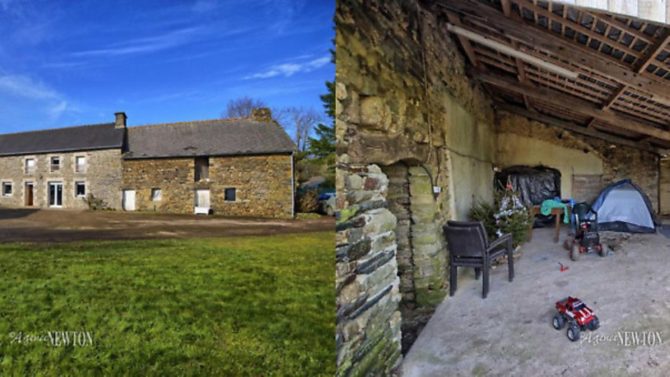4 ways to add space to your French property


If your budget won’t stretch to a large home in France, there are ways to create more space, especially in old country properties

1) Looking up
Many French properties come with spacious lofts (grenier) ideal for conversion, often with beautiful beams. Loft conversions tend to be the most cost-effective way of adding space to your home, but the amount of work required will depend on the roof structure and available headroom.
A declaration of works (déclaration préalable de travaux) will be needed if the new surface area (surface de plancher) is between 5sqm and 20sqm (anything under 1.80m ceiling height is not considered part of the habitable surface area) or if the exterior of the property changes (eg a roof light or new window).
A building permit (permis de construire) is required if the loft conversion increases the height of the property, if it changes the slope of the roof or if the new habitable surface area is over 20sqm. You won’t need planning permission if you’re only making internal changes to the loft and not creating any new surface area.
2) Going underground
Your French property may also have a cellar (sous-sol or cave), maybe even a beautiful vaulted one. It may have been used for storing wine in the past (the constant cooler temperature is ideal for wine) – and you can continue to do so, of course – but it may also offer an opportunity to create extra living space. They tend to be more common in southern properties.
Basement or cellar conversions can be amazing but the work is expensive and disruptive, especially if extensive digging out or reinforcement of foundations is required. Damp-proofing will be a key consideration.
An added advantage of cellar conversions is that, provided they are under 2m in height, you won’t have to pay extra property tax. Generally, whenever you improve your French home, your taxes go up (you are obliged to inform local tax authorities of any work you have done).
________________________
Don’t miss
________________________
3) Moving out
An extension is an obvious way of adding space, especially in a country home with plenty of land around the property. It can also be a great way to introduce a contemporary element to an older house. The potential for extensions is more limited for town and village houses though, as they often come with little outside space.
Of course, many French properties, especially in the countryside, come with outbuildings and barns, sometimes attached to the house, sometimes separate, which are ideal for creating further living accommodation, either for the main house itself or as independent gîtes. Although never intended for human habitation, the stone and beams they’re often built from are perfect for creating the character interiors so many buyers seek.
If your extension or new floor area exceeds 150sqm you will need the services of an archictect – and if your property is within a conservation area, the Architecte des Batiments will need to be consulted. Planning permission will be needed for extensions over 20sqm.
4) Thinking laterally
If you can’t physically add space, it’s often possible to create the feeling of space by remodelling the interior. You can draw up existing floorplans using simple software (or good old pencil and paper), then play around with the layout, removing and adding walls – note that taking out supporting walls will involve considerably more expense and hassle than stud walls, of course.
Halls are often not needed in open-plan designs so can be removed to create extra space; kitchens can be knocked through to dining rooms; a mezzanine floor could be introduced; or ensuites added to bedrooms.
Increasing the number of bedrooms can add a disproportionate amount of value to a property so it’s also worth considering dividing a larger bedroom into two, or utilising spare landing space.
A well-planned extension, loft or cellar conversion can transform your home and should add more value than it costs, but take care it doesn’t take it above the ceiling price in your area. Spending more than you could recoup when you come to sell is not the name of the game!
Share to: Facebook Twitter LinkedIn Email
More in Renovating in France


